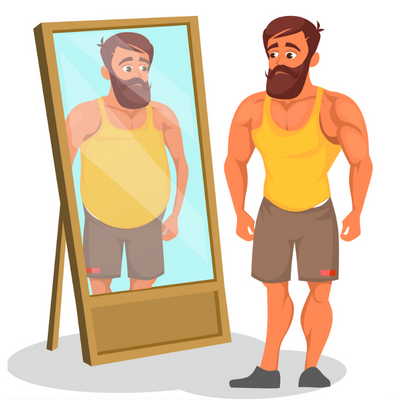Body Image Issues in Men: The Silent Epidemic No One Takes Seriously
For years, discussions around body image have largely centred on women, while men’s struggles have been treated as secondary, occasional, or simply non-existent. Yet, across age groups, professions, and socioeconomic backgrounds, men today are experiencing unprecedented levels of body dissatisfaction often quietly, often invisibly, and frequently without the emotional vocabulary to articulate it.
The phenomenon isn’t new. What has changed is the cultural ecosystem in which men live: algorithms that amplify unrealistic physiques, industries that profit from insecurity, and a social environment where image is increasingly tied to identity. The result is a growing mental-health concern that demands more attention than it currently receives.
The Contemporary Male Aesthetic: A Narrowing Ideal
Over the last two decades, the male body ideal has shifted from simply “fit” to extremely muscular, low-fat, and hyper-defined. This aesthetic popularised by fitness influencers, entertainment media, and performance-enhancement culture has become a benchmark against which many men measure themselves.
The difficulty lies in the fact that this ideal is not only highly specific but largely unattainable for most men without exceptional genetics, rigorous training, restrictive nutritional habits, or external enhancement. As the ideal narrows, dissatisfaction grows and with it, the pressure to engage in increasingly extreme behaviours.

Body Image Pressure in Men: The Unseen Psychological Cost of Gym Culture
In recent years, gym culture has become a double-edged space for many men: a place to build strength, but also a breeding ground for comparison, insecurity, and obsession. The pursuit of the “perfect” physique fuelled by fitness influencers, hyper-masculine ideals, and constant visual comparisons—has pushed many young men toward unhealthy extremes. Muscle dysmorphia, where individuals see themselves as perpetually “small” despite being muscular, is rising quietly, often masked as discipline or dedication. The pressure to achieve rapid, dramatic aesthetic results has also normalised the use of performance-enhancing drugs, from anabolic steroids to SARMs, exposing men to dangerous physical side effects and profound emotional volatility.
Behind these choices is a deeper psychological story: the fear of not being “enough.” Steroid cycles can create cycles of aggression, irritability, shame, and mood instability, while constant comparison erodes self-worth and breeds anxiety around appearance and identity. Many men become trapped in a loop spending hours in the gym, controlling every calorie, hiding steroid use, or feeling guilty for resting yet unable to articulate these struggles because vulnerability does not fit traditional masculinity. This silent psychological toll underscores the need for conversations that de-glorify extreme gym aesthetics and recognise men’s emotional experiences with the same seriousness as their physical ones.
As we approach International Men’s Day on 19 November, it becomes even more important to recognise how deeply these pressures impact men’s mental health. Early intervention especially for young boys absorbing these ideals from social media, peers, and pop culture can prevent years of shame and silent suffering. Acknowledging men’s mental health is not about diminishing women’s experiences; it is about widening the lens to include the emotional realities young men are quietly carrying. When we normalise vulnerability, encourage healthier conversations around body image, and teach boys that their value is not defined by appearance or performance, we take a meaningful step toward dismantling this overlooked epidemic.
Found this helpful? Subscribe below for more


